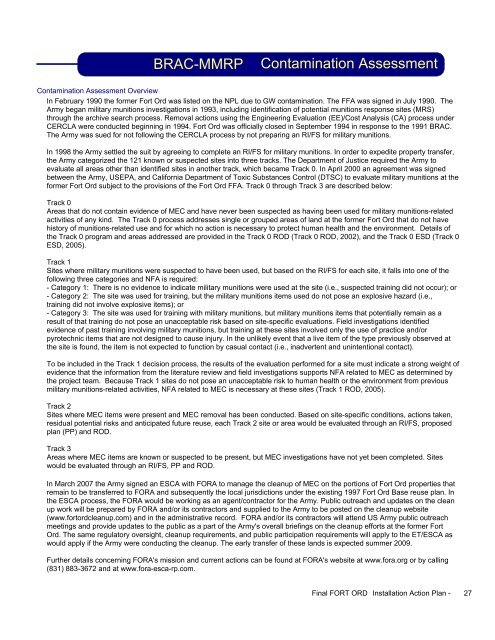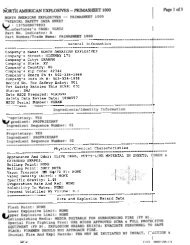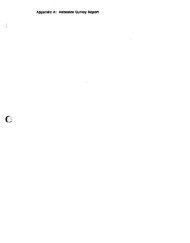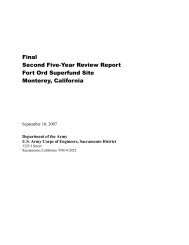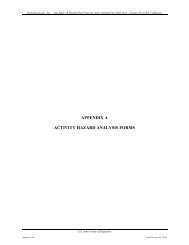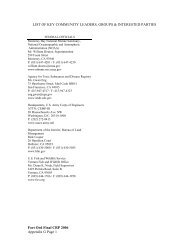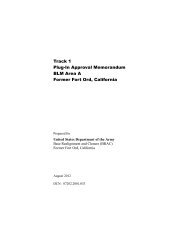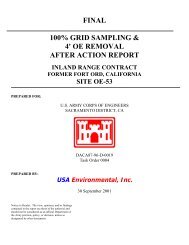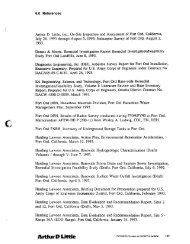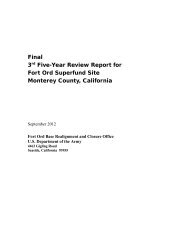FY2009 - Former Fort Ord - Environmental Cleanup
FY2009 - Former Fort Ord - Environmental Cleanup
FY2009 - Former Fort Ord - Environmental Cleanup
You also want an ePaper? Increase the reach of your titles
YUMPU automatically turns print PDFs into web optimized ePapers that Google loves.
BRAC-MMRP<br />
Contamination Assessment<br />
Contamination Assessment Overview<br />
In February 1990 the former <strong>Fort</strong> <strong>Ord</strong> was listed on the NPL due to GW contamination. The FFA was signed in July 1990. The<br />
Army began military munitions investigations in 1993, including identification of potential munitions response sites (MRS)<br />
through the archive search process. Removal actions using the Engineering Evaluation (EE)/Cost Analysis (CA) process under<br />
CERCLA were conducted beginning in 1994. <strong>Fort</strong> <strong>Ord</strong> was officially closed in September 1994 in response to the 1991 BRAC.<br />
The Army was sued for not following the CERCLA process by not preparing an RI/FS for military munitions.<br />
In 1998 the Army settled the suit by agreeing to complete an RI/FS for military munitions. In order to expedite property transfer,<br />
the Army categorized the 121 known or suspected sites into three tracks. The Department of Justice required the Army to<br />
evaluate all areas other than identified sites in another track, which became Track 0. In April 2000 an agreement was signed<br />
between the Army, USEPA, and California Department of Toxic Substances Control (DTSC) to evaluate military munitions at the<br />
former <strong>Fort</strong> <strong>Ord</strong> subject to the provisions of the <strong>Fort</strong> <strong>Ord</strong> FFA. Track 0 through Track 3 are described below:<br />
Track 0<br />
Areas that do not contain evidence of MEC and have never been suspected as having been used for military munitions-related<br />
activities of any kind. The Track 0 process addresses single or grouped areas of land at the former <strong>Fort</strong> <strong>Ord</strong> that do not have<br />
history of munitions-related use and for which no action is necessary to protect human health and the environment. Details of<br />
the Track 0 program and areas addressed are provided in the Track 0 ROD (Track 0 ROD, 2002), and the Track 0 ESD (Track 0<br />
ESD, 2005).<br />
Track 1<br />
Sites where military munitions were suspected to have been used, but based on the RI/FS for each site, it falls into one of the<br />
following three categories and NFA is required:<br />
- Category 1: There is no evidence to indicate military munitions were used at the site (i.e., suspected training did not occur); or<br />
- Category 2: The site was used for training, but the military munitions items used do not pose an explosive hazard (i.e.,<br />
training did not involve explosive items); or<br />
- Category 3: The site was used for training with military munitions, but military munitions items that potentially remain as a<br />
result of that training do not pose an unacceptable risk based on site-specific evaluations. Field investigations identified<br />
evidence of past training involving military munitions, but training at these sites involved only the use of practice and/or<br />
pyrotechnic items that are not designed to cause injury. In the unlikely event that a live item of the type previously observed at<br />
the site is found, the item is not expected to function by casual contact (i.e., inadvertent and unintentional contact).<br />
To be included in the Track 1 decision process, the results of the evaluation performed for a site must indicate a strong weight of<br />
evidence that the information from the literature review and field investigations supports NFA related to MEC as determined by<br />
the project team. Because Track 1 sites do not pose an unacceptable risk to human health or the environment from previous<br />
military munitions-related activities, NFA related to MEC is necessary at these sites (Track 1 ROD, 2005).<br />
Track 2<br />
Sites where MEC items were present and MEC removal has been conducted. Based on site-specific conditions, actions taken,<br />
residual potential risks and anticipated future reuse, each Track 2 site or area would be evaluated through an RI/FS, proposed<br />
plan (PP) and ROD.<br />
Track 3<br />
Areas where MEC items are known or suspected to be present, but MEC investigations have not yet been completed. Sites<br />
would be evaluated through an RI/FS, PP and ROD.<br />
In March 2007 the Army signed an ESCA with FORA to manage the cleanup of MEC on the portions of <strong>Fort</strong> <strong>Ord</strong> properties that<br />
remain to be transferred to FORA and subsequently the local jurisdictions under the existing 1997 <strong>Fort</strong> <strong>Ord</strong> Base reuse plan. In<br />
the ESCA process, the FORA would be working as an agent/contractor for the Army. Public outreach and updates on the clean<br />
up work will be prepared by FORA and/or its contractors and supplied to the Army to be posted on the cleanup website<br />
(www.fortordcleanup.com) and in the administrative record. FORA and/or its contractors will attend US Army public outreach<br />
meetings and provide updates to the public as a part of the Army's overall briefings on the cleanup efforts at the former <strong>Fort</strong><br />
<strong>Ord</strong>. The same regulatory oversight, cleanup requirements, and public participation requirements will apply to the ET/ESCA as<br />
would apply if the Army were conducting the cleanup. The early transfer of these lands is expected summer 2009.<br />
Further details concerning FORA's mission and current actions can be found at FORA's website at www.fora.org or by calling<br />
(831) 883-3672 and at www.fora-esca-rp.com.<br />
Final FORT ORD Installation Action Plan - 27


